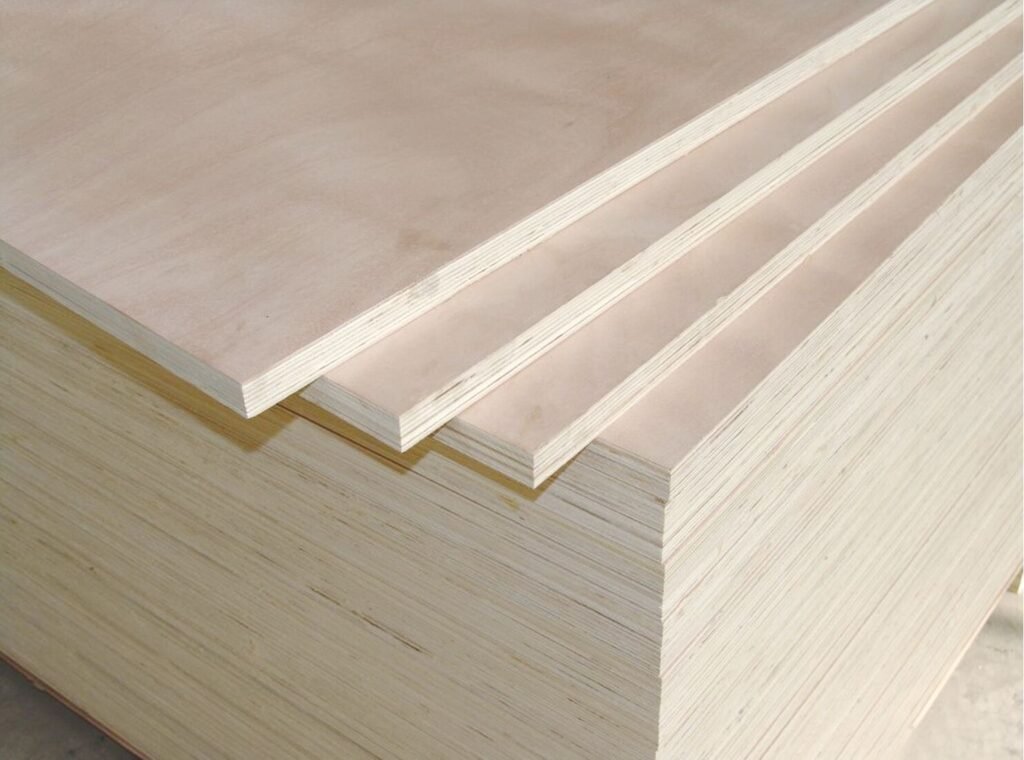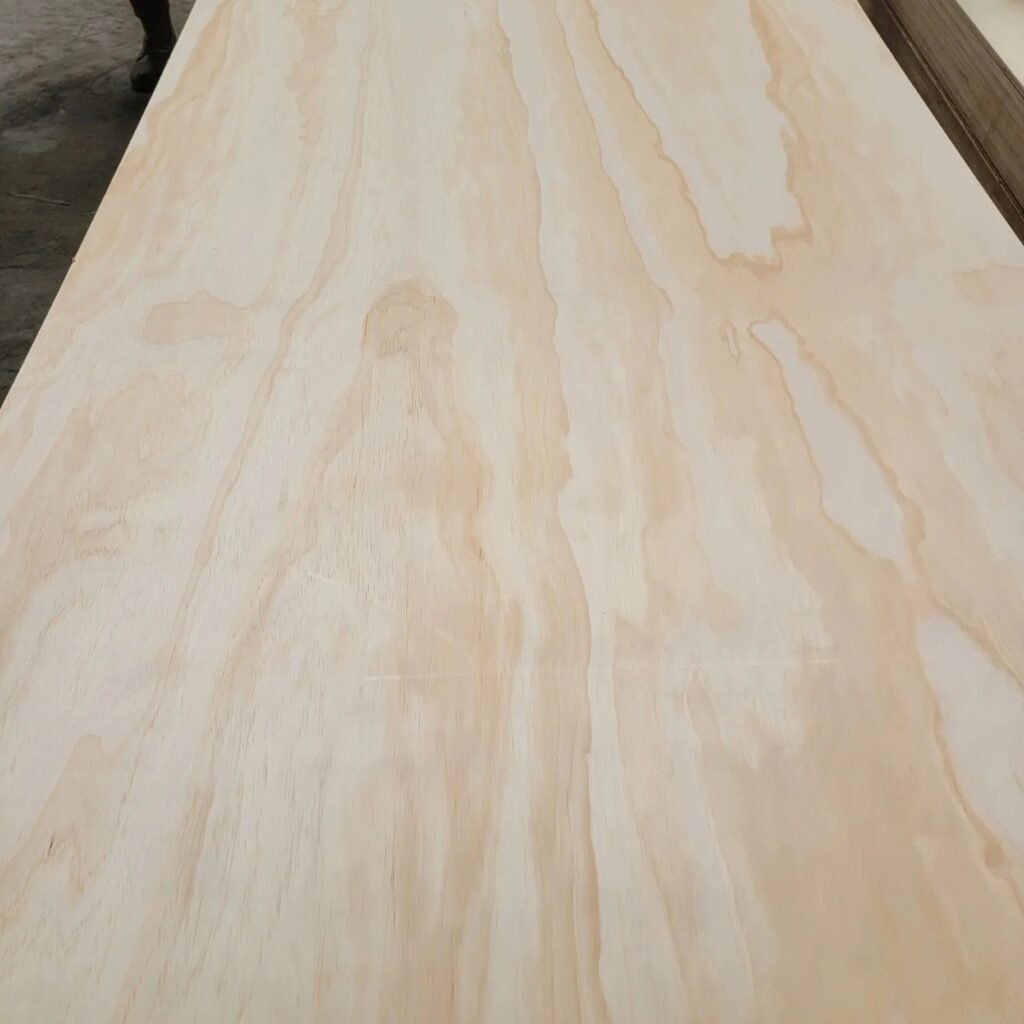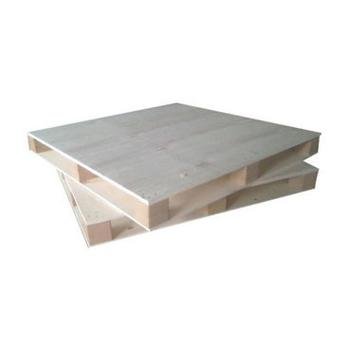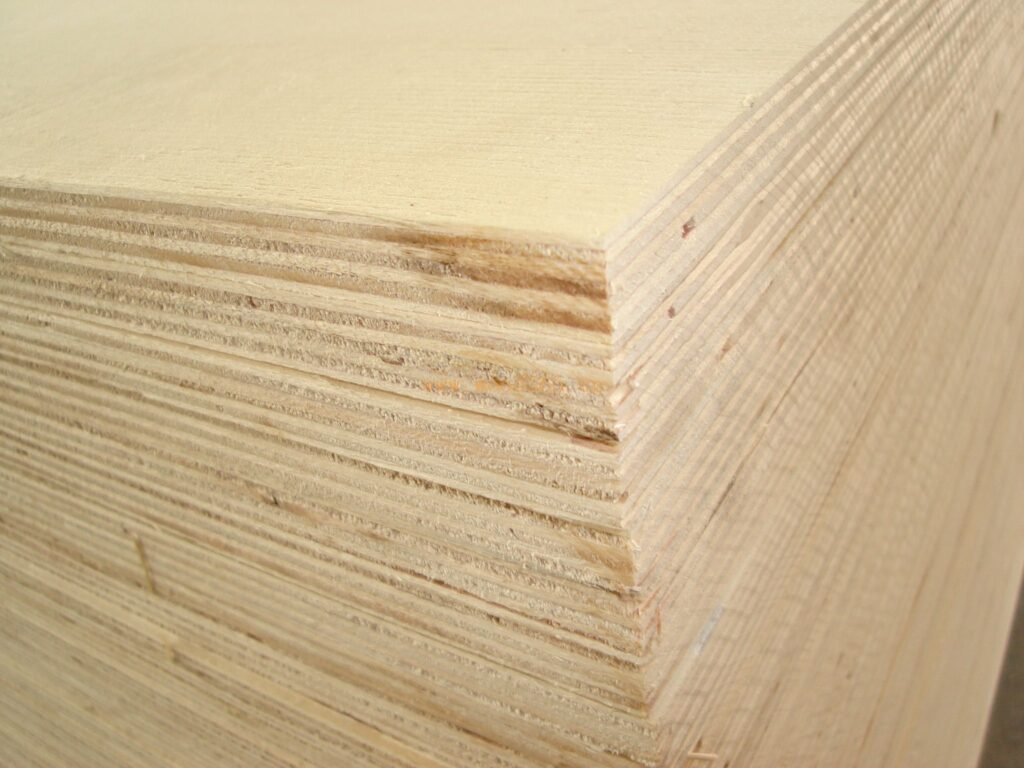When starting a new DIY project, plywood is often an essential material. However, with a wide variety of plywood sizes available on the market, many people may find it challenging to choose the right one. The thickness, length, and width of plywood play a critical role in various projects, and selecting the appropriate size depends on several factors, including the project’s specific needs, budget, and intended use of the plywood.
In this article, we will explore the most common plywood sizes available, including different thicknesses and lengths, and explain the scenarios in which each size is best suited. Whether you’re working on interior renovations, furniture making, or other structural applications, understanding the differences between plywood sizes will help you make an informed decision. By gaining a comprehensive understanding of plywood dimensions, you will be able to select the right materials more efficiently, ensuring the success of your project.
Next, we will walk you through the standard plywood sizes and common thicknesses so that you can clearly understand the characteristics of each specification and make the best choice based on your project needs.
Standard Plywood Sizes: An Essential Guide for Your Project

Plywood is a versatile and essential material used in construction, woodworking, and a wide range of DIY projects. Whether you’re designing custom cabinetry or working on home improvement tasks, understanding the standard plywood sizes is crucial for ensuring that you select the right material for your needs. The right plywood dimensions will not only affect the fit and finish of your project but also its overall structural integrity.
Common Standard Sizes of Plywood
In the United States, the most common standard plywood size is 4 feet by 8 feet (4’ x 8’). This is the industry norm and the most widely available size for various applications. The 4’ x 8’ sheet provides a manageable size for handling, cutting, and transport while offering enough surface area for a variety of construction and woodworking tasks.
However, plywood comes in a range of sizes, and it’s essential to consider your specific project requirements when choosing the dimensions. While 4’ x 8’ is the standard, plywood is also available in smaller and larger sizes for specialized purposes:
- 2′ x 2′ – Ideal for smaller applications, such as crafting, small furniture, or as backing material in certain projects.
- 2′ x 4′ – Commonly used for small repairs, paneling, and in projects where a larger sheet would be too cumbersome.
- 4′ x 4′ – Often used for specialized furniture pieces, smaller cabinetry, or custom-sized shelving.
- 4′ x 10′ – A larger sheet size typically used in construction projects, commercial applications, or areas where long, uninterrupted panels are needed for a clean, smooth surface.
- 5′ x 6′ and 5′ x 8′ – These sizes are often used in specialized applications, including large custom projects or specific architectural designs, where standard 4’ x 8’ sheets don’t offer the necessary coverage.
For those requiring even more specific dimensions, plywood sheets are sometimes available in custom sizes, which can be pre-cut at the hardware store or ordered directly from manufacturers.
Thickness of Plywood
In addition to length and width, plywood is available in various thicknesses to suit different needs. Common plywood thicknesses include:
- 1/8 inch – Often used for decorative veneer or crafting purposes.
- 1/4 inch – Commonly used for paneling, cabinet backs, and thin furniture applications.
- 3/8 inch – Used for general-purpose projects, such as medium-duty shelving and cabinet faces.
- 1/2 inch – Popular for structural applications, furniture, and large cabinetry.
- 5/8 inch – Typically used for flooring and some wall panels, providing extra strength and durability.
- 3/4 inch – The standard thickness for heavy-duty applications, such as subflooring, structural panels, and high-strength furniture pieces.
- 1 inch or thicker – Used for specialized applications requiring extra load-bearing strength or as structural elements in large construction projects.
When selecting plywood for your project, it’s crucial to match the thickness to the load-bearing needs and the type of surface or structure you’re building. A thicker plywood is generally more durable and better for supporting heavier loads, while thinner plywood is ideal for lighter, less demanding uses.
Choosing the Right Size for Your Project
The right plywood size depends on the specific needs of your project. For example, if you’re building large custom furniture pieces, 4′ x 8′ or 4′ x 10′ sheets are ideal due to their ability to cover a larger surface area with fewer seams. For smaller DIY projects, such as picture frames or model-making, a 2′ x 2′ or 2′ x 4′ sheet might be more appropriate.
Additionally, consider the space you have available for storage and handling. While large sheets like 4′ x 10′ are excellent for covering more area with fewer cuts, they can be difficult to maneuver in smaller spaces. On the other hand, smaller sheets are easier to handle but may require more cuts to achieve the same area coverage.
Selecting the correct plywood size is essential for ensuring the success of your project. Understanding the standard sizes, including 4′ x 8′, 4′ x 10′, and various smaller dimensions, along with the different thicknesses available, will help you make the right choice. Take into account the scope and requirements of your project to ensure that the plywood you choose provides the appropriate strength, stability, and ease of use. With the right plywood, you can ensure that your project is built to last and functions as intended.
Plywood Thickness: Nominal vs. Actual Thickness

When selecting plywood for your construction or DIY projects, understanding the difference between nominal thickness and actual thickness is essential. Plywood thickness is often listed using nominal measurements, but the actual thickness may differ due to the manufacturing process. This difference can influence the overall performance and fit of the plywood in your project.
Nominal Thickness vs. Actual Thickness
Plywood thickness is typically described using nominal thickness, which is the size listed on product labels and specifications. However, the actual thickness is usually slightly thinner due to the sanding process during manufacturing. This slight difference can impact your project’s precision and the plywood’s structural capabilities.
For instance, a piece of plywood labeled as 3/8 inch in thickness is, in reality, closer to 11/32 inch. This reduction occurs because, during the production process, the plywood is sanded down, often removing up to 1/32 inch of material from its nominal thickness. Understanding this distinction ensures that you account for these small variations when cutting, assembling, or joining plywood sheets in your project.
Standard Plywood Thicknesses
Plywood comes in a variety of thicknesses to meet the diverse requirements of different applications. The most common nominal thicknesses include:
- 1/8 inch – Often used for light decorative applications, such as crafting or for veneer finishes.
- 1/4 inch – Commonly used for interior paneling, cabinet backs, and some furniture applications. Its lighter weight makes it easy to work with in smaller projects.
- 3/8 inch – Frequently used for shelving, paneling, and in situations where strength is required without significant weight.
- 1/2 inch – A versatile thickness for many construction and furniture projects, offering good strength for panels, cabinet doors, and lightweight structural applications.
- 5/8 inch – Typically used for subflooring, and more demanding structural uses such as wall sheathing or heavier furniture.
- 3/4 inch – One of the most common thicknesses for structural work, such as flooring, cabinet construction, and shelving. This thickness provides robust support for weight-bearing applications.
- 1 1/8 inch – Often used for highly durable and thick paneling or when extra strength is required for specific applications.
- 1 1/4 inch – Usually found in heavy-duty applications such as load-bearing panels, large-scale construction, or custom structural work.
Actual Thickness Breakdown
While nominal thickness is commonly referred to in plywood specifications, the actual thickness typically differs slightly. Below is a comparison of standard nominal thicknesses and their corresponding actual thicknesses:
- Nominal 1 1/4 inch – Actual thickness: 1 1/4 inch
- Nominal 1 1/8 inch – Actual thickness: 1 1/8 inch
- Nominal 3/4 inch – Actual thickness: 23/32 inch
- Nominal 5/8 inch – Actual thickness: 19/32 inch
- Nominal 1/2 inch – Actual thickness: 15/32 inch
- Nominal 3/8 inch – Actual thickness: 11/32 inch
- Nominal 1/4 inch – Actual thickness: 1/4 inch
- Nominal 1/8 inch – Actual thickness: 1/8 inch
These variations occur due to the way plywood is processed. During manufacturing, the plywood is sanded to smooth the surface and reduce roughness. This sanding process typically removes a small portion of the material, leading to the actual thickness being slightly less than the nominal size.
Why This Matters for Your Project
Understanding the difference between nominal and actual thickness is crucial when planning your project. Even though the differences are usually minimal, they can affect the fit of plywood panels, especially when precision is required. For example, if you’re creating a custom frame or cabinetry, the slight difference in thickness could impact how the plywood fits into the structure, affecting overall performance and the final appearance.
In applications where plywood must fit within a specific thickness or tolerances are tight—such as in flooring, framing, or construction projects—the actual thickness should be taken into account to avoid issues during installation or assembly.
When working with plywood, it’s essential to understand both the nominal and actual thicknesses of the material. While plywood is often sold by its nominal thickness, the actual thickness can be slightly less due to sanding during manufacturing. By being aware of this difference, you can ensure your project turns out exactly as planned, with the proper fit and strength for the intended use. Always double-check the actual thickness to avoid surprises when it comes time to cut or assemble your plywood.
Plywood Dimensional Tolerances: Understanding Quality and Precision

Plywood is a versatile building material made by bonding several layers of wood veneer together, with each layer’s grain direction perpendicular to the next. The quality and consistency of plywood depend not only on the types of wood used but also on the precision of its dimensions. Understanding dimensional tolerance is crucial for selecting the right plywood for your project, especially when it comes to thickness and overall accuracy.
What is Dimensional Tolerance?
Dimensional tolerance refers to the permissible variation in the dimensions of the plywood, such as thickness, width, and length, from the stated nominal values. In simpler terms, it is the margin of error allowed during the manufacturing process. Given that plywood is made from layers of wood that are glued together under high pressure, the final product’s dimensions may vary slightly due to factors like moisture content, wood shrinkage, and manufacturing techniques.
Plywood’s dimensional tolerances are categorized based on the grade and intended use of the material. These tolerances are particularly important in applications that demand precision, such as cabinetry, furniture making, or any project that requires multiple sheets to fit together seamlessly.
Types of Plywood and Their Tolerances
The dimensional tolerances of plywood vary based on the grade and intended purpose. Generally, plywood can be divided into two primary categories: cabinet-grade plywood and utility-grade plywood. Each of these categories has different tolerance standards, primarily affecting the thickness measurement but also extending to width and length.
- Utility-Grade Plywood: Utility-grade plywood is often used for construction purposes and in applications where the appearance of the plywood is less important. While this plywood is functional and durable, it tends to have slightly looser dimensional tolerances to accommodate the production process’s variations. For example, utility-grade plywood typically has a thickness tolerance of ±1/32 inch. This means that a piece of plywood labeled as 3/8 inch thick could actually measure anywhere between 11/32 inch and 3/8 inch, depending on slight variations during manufacturing.
- Cabinet-Grade Plywood: Cabinet-grade plywood is of superior quality and is often used in applications where both appearance and precision are crucial. It is manufactured to higher standards with tighter dimensional tolerances. For example, cabinet-grade plywood typically has a thickness tolerance of ±1/64 inch, which means the variation in thickness is much smaller than that of utility-grade plywood. This tighter tolerance is crucial for projects like custom cabinetry, where precise measurements ensure a perfect fit and smooth appearance.
Factors Influencing Dimensional Tolerances
Several factors influence the dimensional tolerance of plywood, including:
- Wood Type: The type of wood used for the core and veneers can affect the final dimensions. Hardwoods tend to be more stable than softwoods, which can lead to smaller dimensional variations.
- Moisture Content: Wood is a hygroscopic material, meaning it absorbs and releases moisture depending on the environment. Fluctuations in moisture content during storage or production can lead to slight dimensional changes in plywood.
- Manufacturing Process: The quality control standards employed by manufacturers also play a significant role in dimensional tolerance. Premium plywood manufacturers use advanced machinery and techniques to minimize variations in thickness, width, and length. Conversely, budget or mass-produced plywood may have larger tolerances to reduce costs.
- Sanding and Finishing: The sanding process is essential for achieving a smooth surface but also contributes to slight reductions in the overall thickness of the plywood. During the sanding process, plywood can lose up to 1/32 inch of material from its nominal thickness, which affects the final dimensions.
Importance of Tolerances in Plywood Applications
For many projects, especially those that require precision and high aesthetic standards, choosing plywood with tight dimensional tolerances is essential. In applications like cabinet making, where uniformity and a high-quality finish are necessary, selecting plywood with smaller tolerances ensures that the panels fit together perfectly, with minimal gaps or adjustments required.
Additionally, for projects that involve structural support, such as flooring or wall sheathing, the accuracy of plywood dimensions can affect the overall strength and stability of the finished structure. Even minor dimensional discrepancies could lead to alignment issues or weak spots in the construction.
In summary, plywood dimensional tolerances are an important factor to consider when selecting the right material for your project. Utility-grade plywood typically has a larger tolerance of ±1/32 inch, making it suitable for less precise, utilitarian applications. On the other hand, cabinet-grade plywood offers a tighter tolerance of ±1/64 inch, making it the preferred choice for projects requiring both aesthetic appeal and exacting dimensions. By understanding these tolerances, you can make informed decisions that will ensure the success of your project, whether it’s for construction, cabinetry, or furniture making. Always keep in mind the specific needs of your project and select the plywood that meets your dimensional and aesthetic requirements.
Selecting the Right Plywood for Your Project

When embarking on any construction or DIY project, choosing the appropriate plywood is crucial for ensuring the quality, durability, and precision of your work. The specific requirements of your project—such as the type of structure you’re building or the aesthetic you aim to achieve—will determine not only the size of the plywood sheets you need but also the material and thickness that best suit the task.
Tailoring Your Plywood Choice to Project Needs
For example, if you are constructing an outdoor structure like a dog house or installing subflooring, softwood plywood is often the best choice. This type of plywood is typically made from softer woods such as cedar, redwood, or pine, and it comes in various sizes ranging from standard 4 x 8 feet to more specialized dimensions like 5 x 5 feet. Softwood plywood is durable enough for structural uses and offers the versatility required for projects exposed to the elements.
On the other hand, if you’re working on a project that requires a more refined, high-end finish—such as building custom cabinets or a closet system—hardwood plywood may be a better option. Hardwood plywood often features a 3-ply construction, with hardwood veneers on the exterior and a softwood core. The outer veneer provides a smooth, attractive finish, while the interior layers provide stability. For these types of projects, a common thickness for the plywood would be around 18mm (approximately 3/4 inch), offering the strength and appearance needed for fine woodworking.
Another important factor to consider is the plywood’s grade. For applications like cabinetry or furniture making, selecting grade A or B plywood—which offers a smooth surface free of blemishes—will help ensure that your final product has the polished, professional look you’re aiming for. However, for structural or utility applications, such as flooring or sheathing, lower-grade plywood may be sufficient, as it is more affordable and designed for less aesthetic-driven tasks.
Why Proper Sizing and Material Matter
Choosing the correct size and thickness of plywood is more than just a matter of fitting the material to the available space. The right size will ensure minimal wastage and easier handling, while the correct thickness will provide the structural integrity necessary for your project. For instance, building a sturdy shelving unit or workbench will require plywood with the appropriate thickness to support weight without sagging. Similarly, using plywood that is too thin for subflooring can result in instability and potential damage.
If you’re still uncertain about which plywood dimensions and material will best suit your specific needs, or if you require professional advice on the most suitable thickness for your project, we recommend reaching out to Woodifys. Our team of experts can provide guidance on everything from selecting the ideal plywood grade to determining the right thickness for your structure. Additionally, we offer a wide range of plywood types, including specialty options for unique projects.
At Woodifys, we pride ourselves on not only offering a vast selection of plywood but also providing the expertise needed to help you choose the right materials for your work. Whether you’re a seasoned contractor or a DIY enthusiast, we are here to ensure that your project goes smoothly from start to finish. Contact us today to find the ideal plywood size, type, and thickness for your next project. We are here to help you every step of the way.
